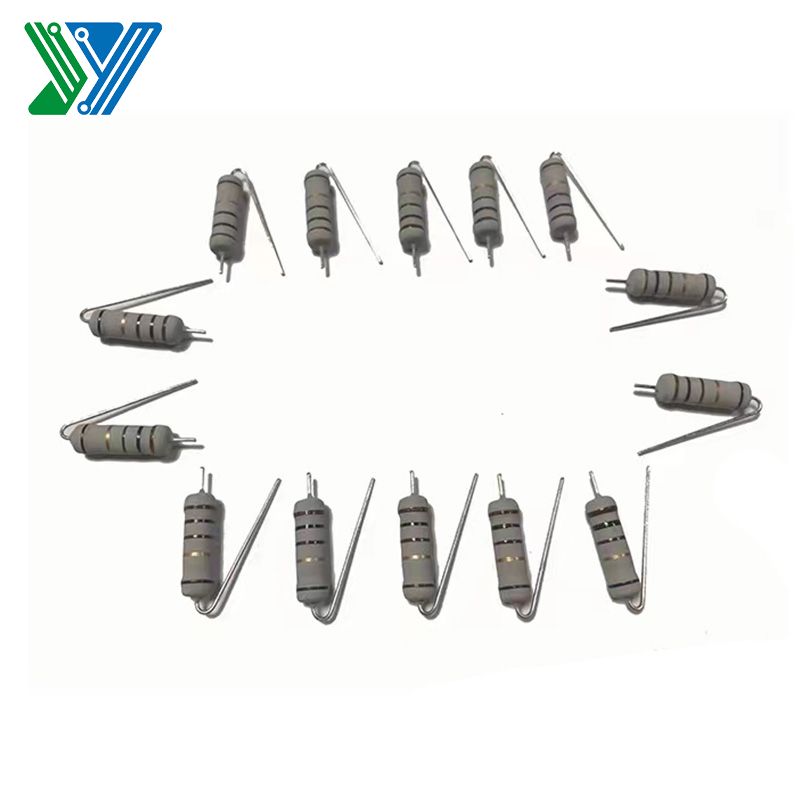Jun. 05, 2023
Electronic Components & Supplies
Wire wound resistors are versatile electronic components that play a critical role in controlling current flow and ensuring the proper functioning of electronic circuits. When selecting a wire wound resistor for your electronic projects, it is important to consider several key factors to ensure compatibility and optimal performance. Here are some essential considerations to help you choose the right wire wound resistor for your specific application:

1. Resistance Value:
The resistance value of the wire wound resistors is a crucial parameter to consider. It determines the amount of resistance the component will provide in the circuit. Identify the required resistance value based on your circuit design and specifications. Ensure that the wire wound resistor you choose offers the desired resistance value within the required tolerance range.
2. Power Rating:
The power rating of a wire wound resistor indicates the maximum power it can dissipate without overheating or causing damage. Calculate the power dissipation in your circuit and choose a wire wound resistor with a power rating that exceeds this value. It is important to provide a safety margin to prevent overheating and ensure reliable operation.
3. Tolerance:
Tolerance refers to the permissible deviation from the specified resistance value. It is denoted as a percentage. Consider the required precision in your circuit design and select a wire wound resistor with an appropriate tolerance level. Standard tolerance levels are commonly available, such as ±1%, ±5%, or ±10%. Higher precision applications may require resistors with tighter tolerance levels.
4. Temperature Coefficient of Resistance (TCR):
The TCR indicates the change in resistance with temperature. Different wire wound resistors have different TCR values, which affect their performance in varying temperature conditions. Consider the operating temperature range of your application and choose a wire wound resistor with a TCR that suits your needs. A lower TCR indicates better stability over a wide temperature range.
5. Power Coefficient:
The power coefficient, also known as the pulse power rating or derating curve, specifies how the power rating of the resistor changes with temperature. It is essential to select a wire wound resistor that can handle the power dissipation in your circuit while accounting for temperature variations.
6. Physical Size:
Consider the physical dimensions of the wire coated wound resistor, including its length, width, and height, to ensure it fits within your circuit layout. Verify the component's package size and compare it with the available space on your PCB or in your enclosure.
7. Environmental Considerations:
Evaluate the environmental conditions in which your electronic project will operate. Factors such as temperature extremes, humidity, vibration, or exposure to chemicals may impact the performance and lifespan of the wire wound resistor. Choose a resistor that is designed to withstand the specific environmental conditions of your application.
8. Inductance and Capacitance:
In high-frequency applications, the inductance and capacitance of a wire wound resistor can impact circuit performance. If your project involves high-frequency signals, choose a wire wound resistor with low inductance and capacitance values to minimize any adverse effects on the signal integrity.
9. Quality and Reliability:
Select wire wound resistors from reputable manufacturers known for producing high-quality components. Consider factors such as the manufacturer's reputation, certifications, and reliability track record to ensure the resistor's long-term performance and durability.
10. Cost:
Consider your budget constraints when selecting a wire wound resistor. Compare prices from different suppliers while considering the desired specifications and quality. However, ensure that cost is not the sole determining factor, as compromising on quality or performance may lead to issues in the long run.
Conclusion
Choosing the right wire wound resistor is essential for the proper functioning and performance of your electronic projects. Consider factors such as resistance value, power rating, tolerance, TCR, physical size, environmental considerations, inductance and capacitance, quality, and cost.
If you are interested in sending in a Guest Blogger Submission,welcome to write for us!
All Comments ( 0 )